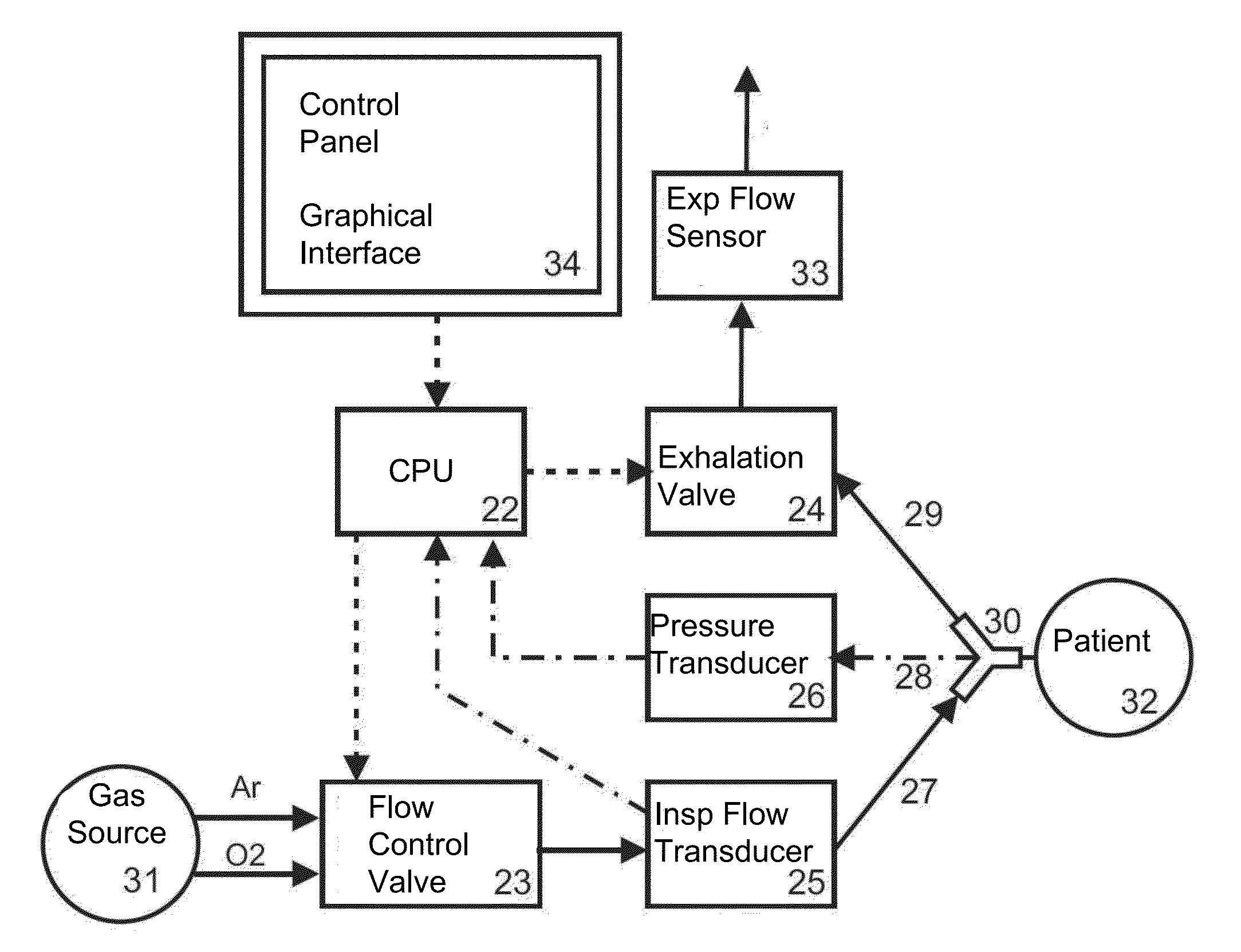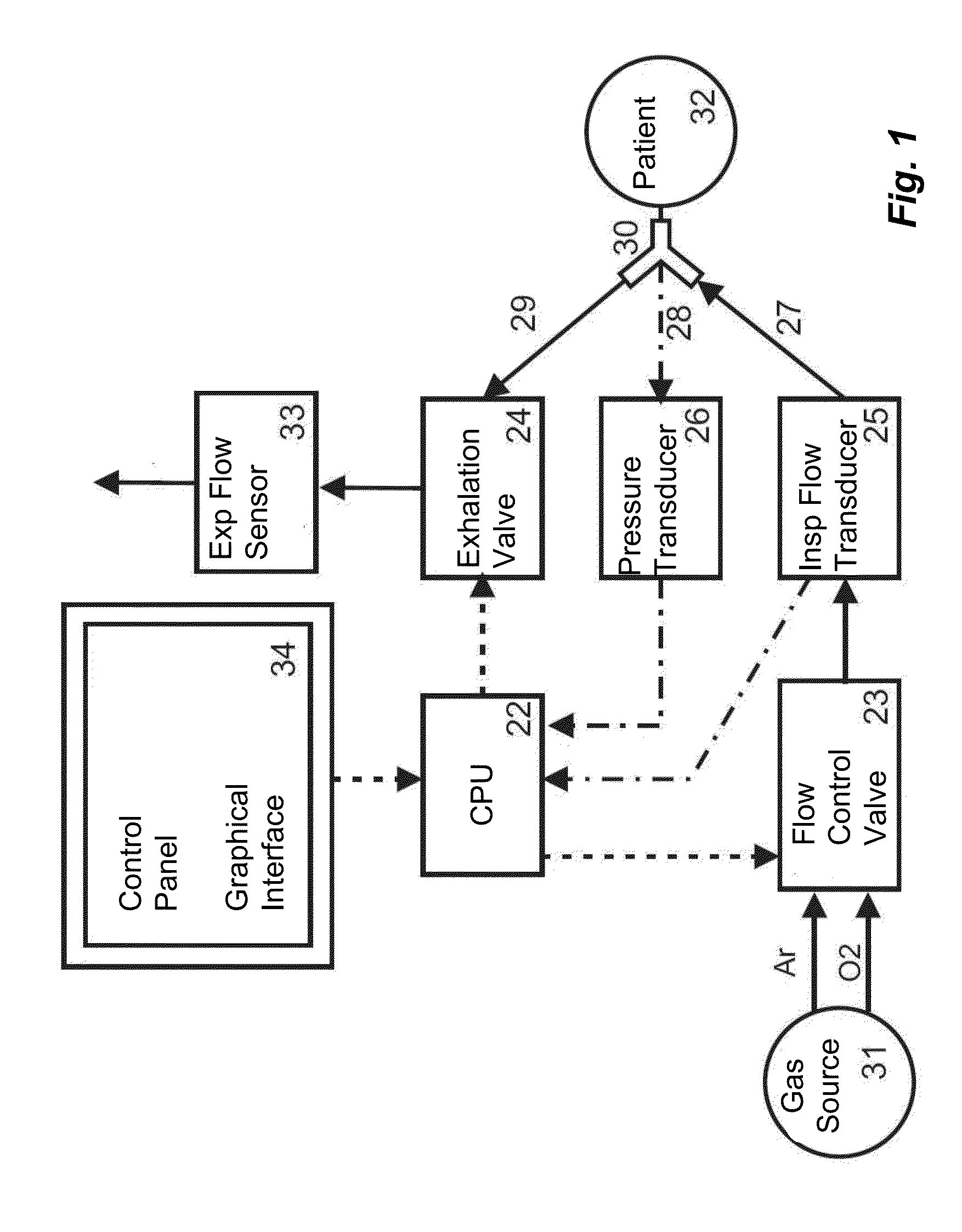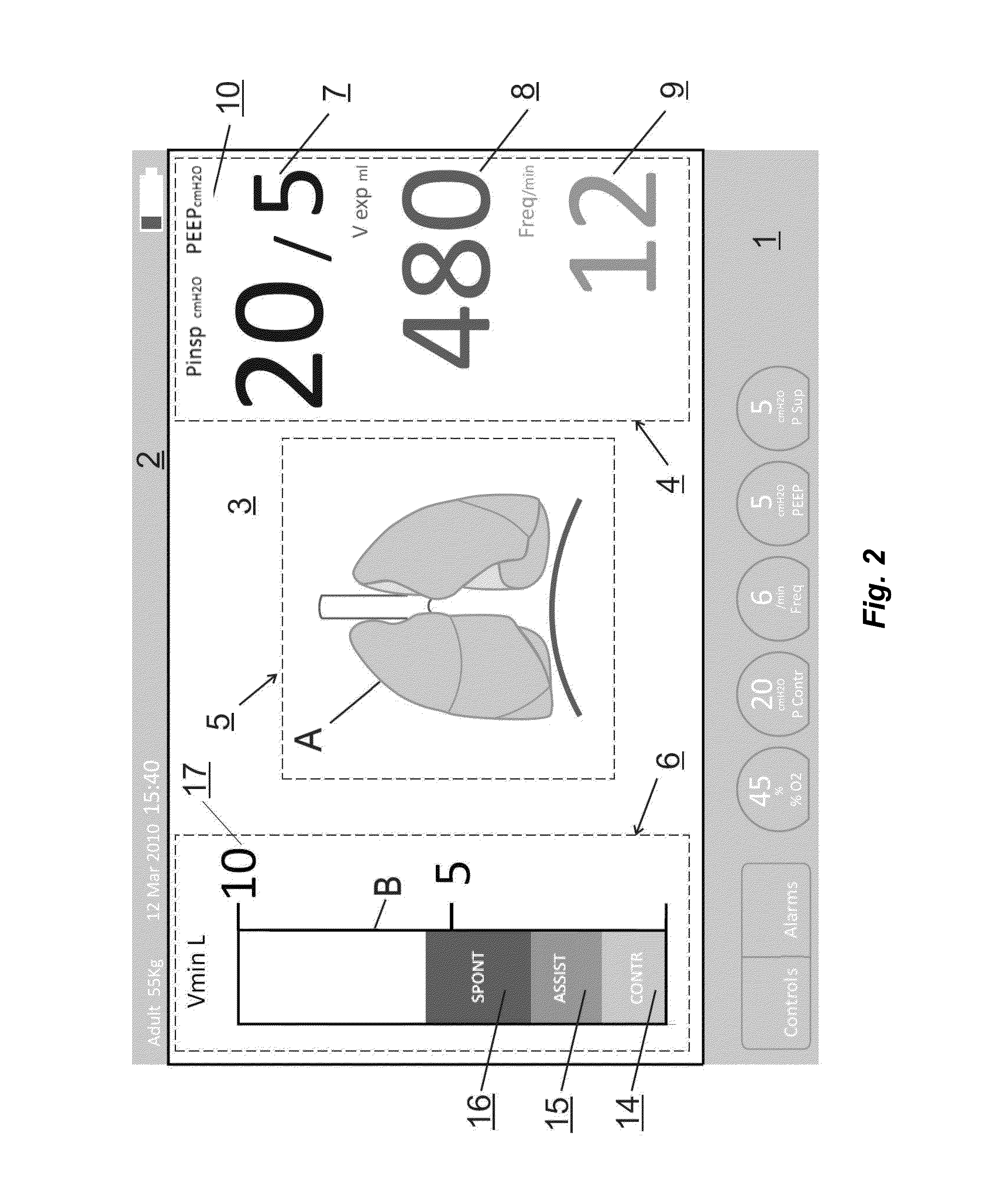Lung ventilation device
a ventilation device and a technology for lung, applied in the direction of audible signalling system, operating means/releasing devices for valves, instruments, etc., can solve the problems of complex design, affecting the visualization of patient data, and affecting the patient's diagnosis, etc., to facilitate and promote effective patient monitoring and surveillance, improve visualization and recognition, and enhance patient safety levels
- Summary
- Abstract
- Description
- Claims
- Application Information
AI Technical Summary
Benefits of technology
Problems solved by technology
Method used
Image
Examples
Embodiment Construction
[0037]In order to ensure an easier understanding of the configurable elements of the graphical interface of the lung ventilation device, according to the present invention, as well as its preferred embodiments, the numerical references will not be repeated in full in all the Figures, as this might hamper the understanding of some details illustrated therein.
[0038]FIG. 1 schematically represents a typical ventilation system of the type contemplated by the present invention, comprising a flow and pressure control valve 23 connected to a gas source 31, which controls the inspiratory flow through an inflow tube 27 connected to the patient 32 through a “Y” shaped connector 30. The patient 32 exhales the gas through an outflow tube 29, connected to the other end of the “Y” shaped connector 30, as controlled by exhalation valve 24. The airway pressure of the patient is transmitted from the “Y” shaped connector 30 which is connected to a pressure transducer 26 through a tube 28.
[0039]The in...
PUM
 Login to View More
Login to View More Abstract
Description
Claims
Application Information
 Login to View More
Login to View More - R&D
- Intellectual Property
- Life Sciences
- Materials
- Tech Scout
- Unparalleled Data Quality
- Higher Quality Content
- 60% Fewer Hallucinations
Browse by: Latest US Patents, China's latest patents, Technical Efficacy Thesaurus, Application Domain, Technology Topic, Popular Technical Reports.
© 2025 PatSnap. All rights reserved.Legal|Privacy policy|Modern Slavery Act Transparency Statement|Sitemap|About US| Contact US: help@patsnap.com



